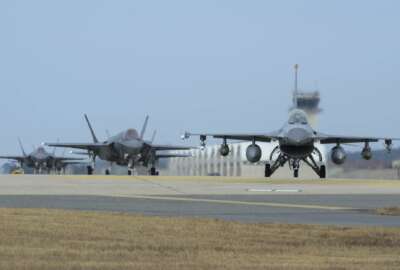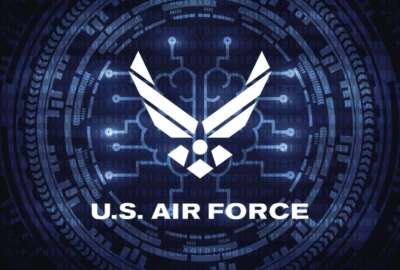
Army deems it’s time to kick its addiction to oil in face of global rivals
The Army wants to get away from its reliance on oil and it's new acquisition arm is looking into it.
Best listening experience is on Chrome, Firefox or Safari. Subscribe to Federal Drive’s daily audio interviews on Apple Podcasts or PodcastOne.
The Army and Greta Thunberg, the teenage climate change activist who gave an impassioned speech at the United Nations this week, may have more in common than you’d think — just for different reasons.
Lt. Gen. Eric Wesley, Army Futures Command deputy commanding general, said one of the two areas the Army needs to push on is alternative power sources and hybrid electric power, during a Tuesday event at the Brookings Institution in Washington.
The idea isn’t outlandish for a military service that uses millions of barrels of oil a year, but the fact that Futures Command is signaling the need for new ways to power its weapons and vehicles shows the Army has serious intent.
The Army created Futures Command last year to focus on six main priorities for near-peer competition, and to hone its acquisition process into something that can move technologies quickly from idea to the hands of soldiers.
Energy resilience is not one of six priorities the Army is focusing on — including, for example, future vertical lift, air and missile defense and long-range precision fires— but it does affect every single one of them.
Without fossil fuels those technologies couldn’t work, and in a near-peer competitor environment it’s possible fuel lines could be cut.
“The M1 Abrams tank consumes fuel at a rate not many weapons systems could compare to,” Wesley said. “How can we extricate ourselves from the industrial-age notion of continual flows of fuel that was all germane to the automotive revolution? The idea is to use hybrid-electric power so we can cut the ties of our long, significant logistics chain, which make us vulnerable to targeting.”
That’s not the only area where the Futures Command wants to put resources in the future. Another area which is not on its prioritization list is artificial intelligence.
AI is a buzzword in the Pentagon these days, and the military services are starting to get their hands around the idea of making data usable for AI systems.
“We think that artificial intelligence will be imperative to augment human decision-making,” Wesley said. “When you have a very hyperactive environment with a myriad of countless targets, and the need to incorporate all the weapons systems of the joint force, and you’re trying to integrate all five domains, all of which are controlled by a different echelon or service, then the need is to be able to respond rapidly with the right weapons system. That system needs to be used at the right time and that will only best be achieved by the use of a significant combat cloud or data lake that you can apply AI to prioritized targeting.”
Wesley said the next challenge for the Army is integrating machines to work together.
The Air Force is already moving ahead with its AI plans.
This month it released an AI strategy that recognizes the technology as crucial to fielding a future Air Force, executing multi-domain operations and confronting threats before they reach the level of actual combat.
“We will review our corporate processes and reform underlying critical aspects of agility principled on government-purpose data rights to ensure we are consistently generating training quality data for algorithmic development,” the strategy states. “It is a priority to architect solutions that provide the shortest path between development and operational events.”
The service is realigning itself to be more digital and data focused so it can harness AI and similar advancements.
Wesley said the Army is completely behind what the Air Force is doing.
Copyright © 2025 Federal News Network. All rights reserved. This website is not intended for users located within the European Economic Area.
Scott Maucione is a defense reporter for Federal News Network and reports on human capital, workforce and the Defense Department at-large.
Follow @smaucioneWFED





